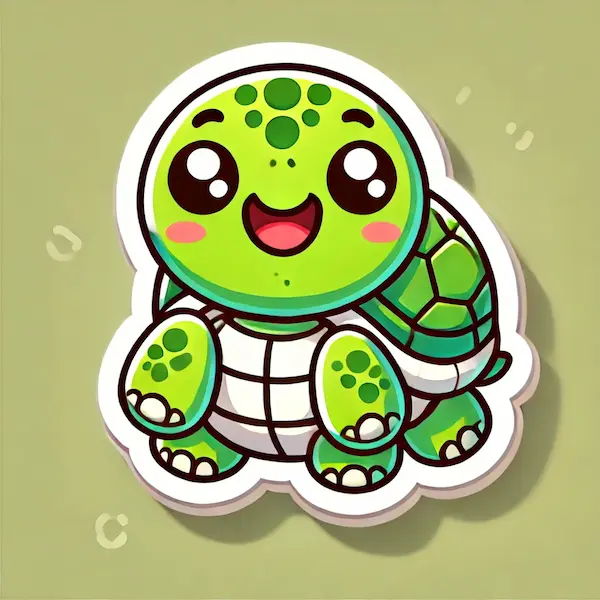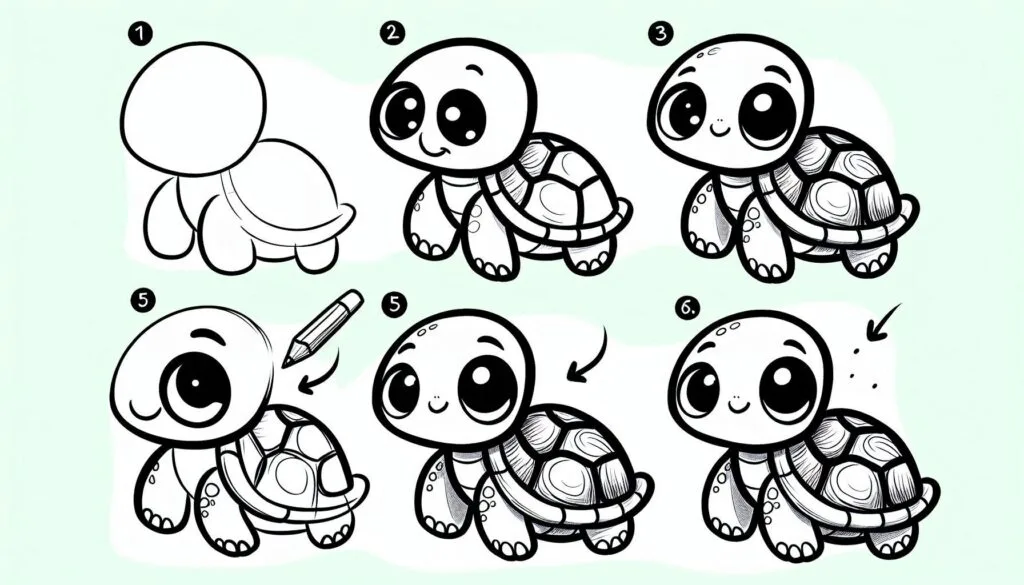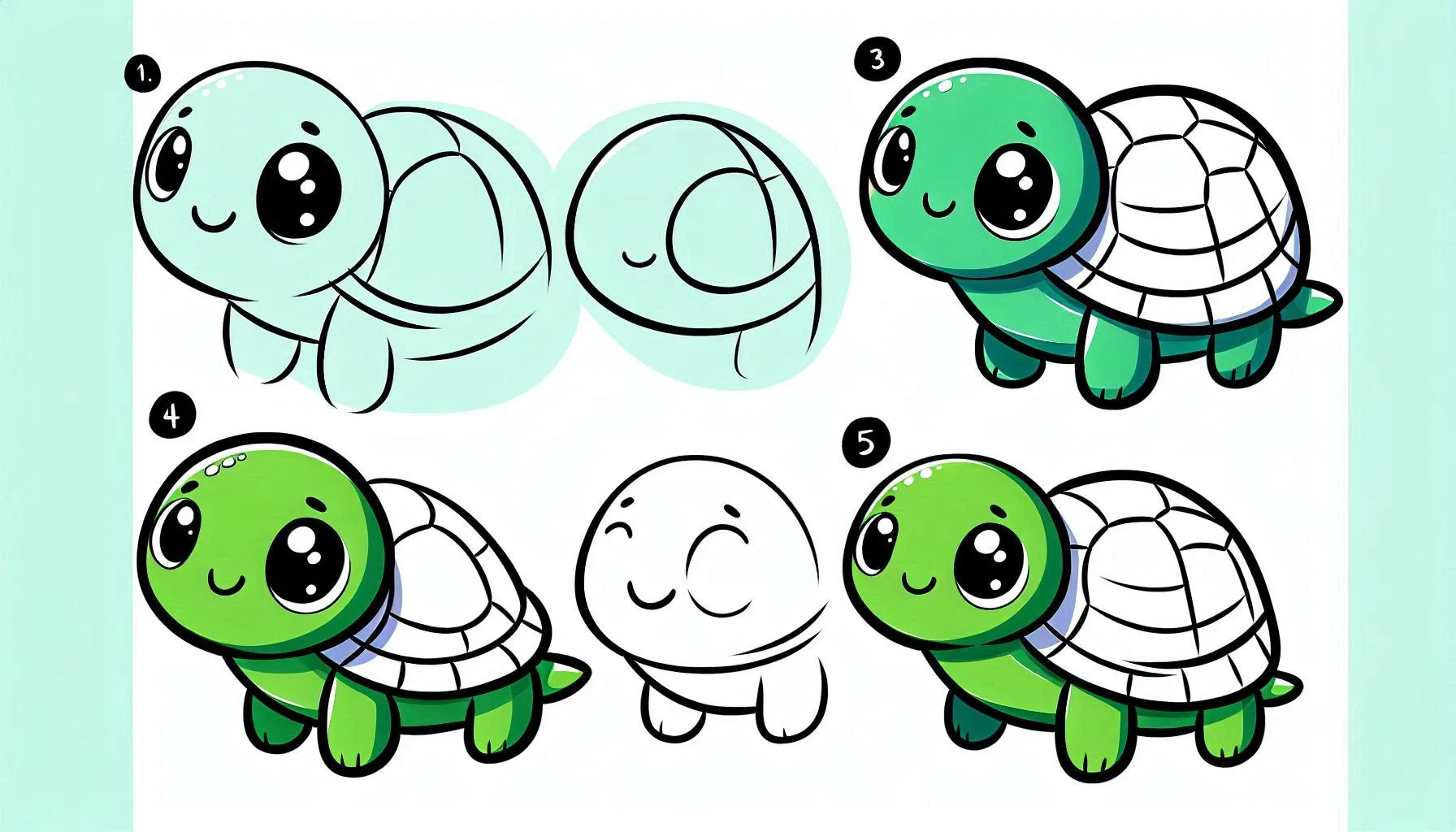Creating a turtle drawing is a wonderful way to appreciate the beauty of these leisurely creatures with protective shells. Turtles have a unique look, characterized by their rounded shell, strong legs, and peaceful nature. In this guide, we will take you through the process of drawing a turtle, with a focus on capturing its unique characteristics and incorporating artistic elements. Let’s embark on this imaginative journey!
The Fascinating Anatomy of Turtles
Turtles possess various distinctive characteristics, such as their domed shell, robust legs, and the ability to retract their head into the shell. They have a unique and playful shape that makes them a delightful subject for drawing. Understanding these features will enable you to create a depiction that is both precise and captivating.
The Joy of Capturing the Shell and Texture
The turtle’s shell is quite remarkable, boasting a smooth, curved surface and a unique pattern. Creating the shell requires capturing its unique texture and shape. This challenge helps improve your skills in working with curved surfaces and adding realistic details.
Discovering the Fascinating World of Turtles Through Art
Turtles are captivating creatures with a wide range of habitats and behaviors. Exploring the unique adaptations and role of these little ones in nature can be quite fascinating. This theme highlights the educational side of art and the chance to explore different aspects of turtle life through creative expression.
Steps: How to Draw a Turtle
First, start by sketching the fundamental outline.
Begin by sketching the fundamental outline of the turtle’s shell. Start by creating a sizable, curved oval or a slightly stretched-out circle for the shell. It’s important to ensure that the shell of turtles has a slight curve to it. Create a smaller oval or circle for the turtle’s head at one end of the shell.
Step 2: Incorporate the Head and Facial Features
Place the head at the front of the shell. The head has a rounded and slightly oval shape. Place two small, circular eyes on each side of the head. Create a small, curved line to form the mouth. The head should have a warm and approachable expression.
Step 3: Now let’s move on to drawing the legs and feet.
Turtles have four strong legs. Sketch the front legs as gently curved, compact forms that emerge from the sides of the shell. Complete the look by adding small, rounded shapes at the end of each leg. When drawing the hind legs, try making them a little bigger and placing them a bit further back. The hind legs can have a slightly stronger and wider stance.
Step 4: Now it’s time to draw the tail.
Turtles possess a petite, stubby tail that extends from the back of their shell. Create a small, triangular shape towards the rear of the shell. The tail should be petite and subtly integrated, complementing the turtle’s overall delicate appearance.
Step 5: Enhance the Shell with Texture and Patterns
To capture the texture of the turtle’s shell, create a sequence of curved lines and shapes that depict the scutes, which are the individual plates of the shell. Turtles frequently display a captivating arrangement of hexagonal or polygonal shapes on their shells. Incorporate these patterns to bring more realism and intrigue to your drawing.
Step 6: Perfecting the Form
Consider using a darker writing utensil to carefully trace over your initial drawing and enhance the turtle’s form. Make the lines of the shell, head, legs, and tail smoother. Make sure the body segments, legs, and tail are clearly defined and in proper proportion. Remove any unnecessary guidelines or overlapping lines to tidy up your drawing.
Step 7: Enhance with Shading and Color
Take your drawing to the next level by incorporating shading techniques that will bring out the texture and depth of the turtle. Utilize deeper hues to generate shadows beneath the legs, surrounding the creases of the shell, and tracing along the tail. When coloring your drawing, consider using shades that capture the natural colors of turtles, such as green, brown, or gray. Use lighter shades to highlight and darker colors to create shadows, resulting in a lifelike appearance that brings out the details.
Topic 1: The Fascinating Physiology of Turtles
Exploring the anatomy of a turtle through drawing allows you to appreciate its distinct features, such as the domed shell, sturdy legs, and retractable head. Understanding these features enables you to create a thorough and precise representation. Understanding the intricacies of turtle anatomy can greatly improve your artistic abilities and deepen your understanding of these captivating reptiles.

Theme 2: The Joy of Capturing the Shell and Texture
The turtle’s shell provides an enjoyable and fulfilling challenge for artists. Capturing the smooth, curved surface and distinctive patterns of this requires creativity and skill. Take pleasure in the process of adding texture and detail to the turtle’s shell, bringing it to life.
Theme 3: Discovering the Fascinating World of Turtles Through Art
With their fascinating appearance and unique adaptations, turtles provide an opportunity to delve into captivating aspects of reptile life. Exploring different textures and colors in your artwork can create a visually engaging and educational experience. This theme emphasizes the excitement of exploring different aspects of turtle life through art.
In summary
Drawing a turtle is a fun and captivating experience that lets you capture the distinct features and textures of these gentle reptiles. By following the steps in this guide and paying attention to its anatomy, texture, and colors, you can create a detailed and captivating turtle drawing. Embrace the joy of the artistic process and let your imagination soar as you create a beautiful masterpiece!


For a fun and simple guide on how to draw a crocodile, you can find step-by-step instructions here! This fun tutorial offers easy-to-follow steps, allowing young creators to dive into their imagination while discovering the wonders of these amazing reptiles!





